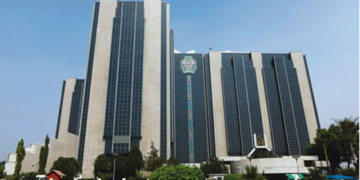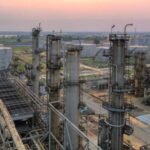Just a few months after the NNPC released its first audited financial statements, which was for the 2018 financial year, the corporation recently released the 2019 audited financial statements for the group and all of its subsidiaries. The NNPC refineries produced more losses in 2019, than they did in 2018, thus confirming the tag “Loss-making machines”.
The Nigerian National Petroleum Corporation (NNPC) is the oil corporation through which the federal government of Nigeria regulates and participates in the country’s petroleum industry. The NNPC operates multiple business units, amongst them are the refineries; Port Harcourt Refining Company Limited (PHRC), Warri Refining and Petrochemicals Company Limited (WRPC), Kaduna Refining and Petrochemicals Company Limited (WRPC).
- Read also; Nigeria’s Paystack bought for $200 million by Silicon Valley’s Stripe
- Vacancy: Technical Resident Advisor required at SEC Nigeria
In Investogist report in June 2019, analyzing the 2018 financial statements, we suggested that the KRPC be broken up, while the PHRC and WRPC be privatized. The capacities of the refineries are;
- Port Harcourt Refining Company Limited (PHRC) with an installed oil refining capacity of 210,000 Barrel Per Stream Day. PHRC comprises of two refineries, the old refinery with a capacity of 60,000 bpsd, and the new refinery with an installed capacity of 150,000 bspd.
- Warri Refinery & Petrochemical Company Limited (WRPC) with an installed oil refining capacity of 125,000 Barrels Per Stream Day. WRPC also has a petrochemical plant, that uses propylene rich feed to produce polypropylene pellets.
- Kaduna Refinery & Petrochemical Company Limited (KRPC) with an installed oil refining capacity of 110,000 Barrels Per Stream Day. KRPC also has a petrochemical plant; a 30,000 MT/yr Linear Alkyl Benzene Plant.
In 2018, KRPC made ZERO revenue for the entire year, and in 2019, it was the turn of PHRC to report ZERO revenue. The WRPC saw its revenue drop significantly, while KRPC recorded some revenue albeit it being negligible for an oil refinery.
All highlights of the statement of profit/loss of the three refineries are shown below;
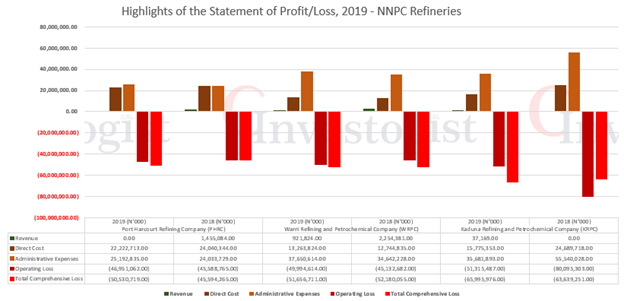
As can be seen from the highlights, while net revenue for all three refineries reduced in 2019, all their direct costs and administrative expenses increased. The total amount spent on employees is relatively high when compared to the output and the number of employees.
Below is the total employee’s cost versus the number of employees graph for each of the refineries.
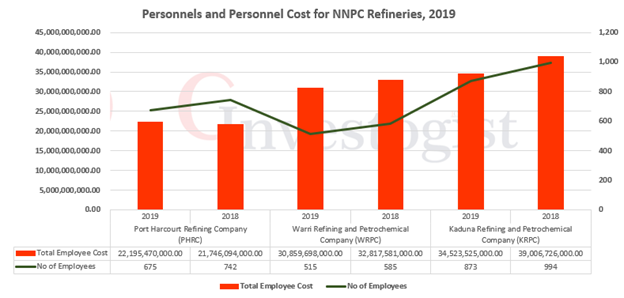
The financial position of the refineries did not show an improvement over the 12 months in review; the retained losses continued to skyrocket. By adding high-value asset items like below, the refineries were able to balance their books;
- PHRC: “Rights of use assets” went from ZERO in 2018 to N68.069 billion in 2019.
- WRPC: “Property, plant, and equipment” went from N735.195 million in 2018 to N53.126 billion in 2019.
- KRPC: “Rights of use assets” went from ZERO in 2018 to N73.028 billion in 2019.
Highlights of the refineries’ balance sheets are shown in the graph below.
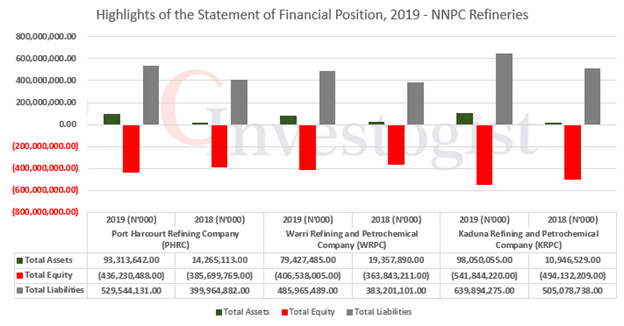
It is very difficult for anyone to see an iota of redemption for these refineries without the companies being scrapped and started anew.
By; Nnamdi M.














